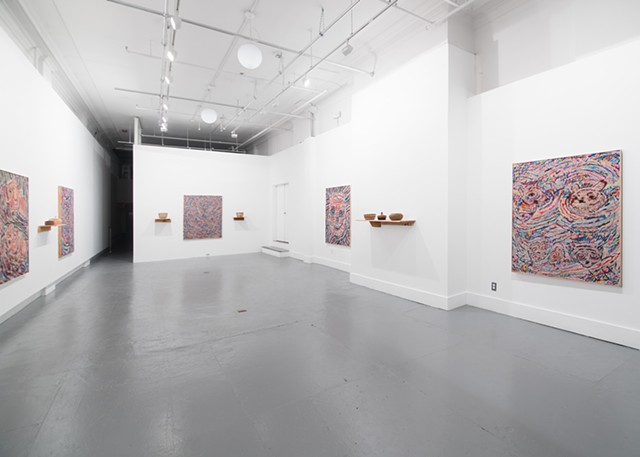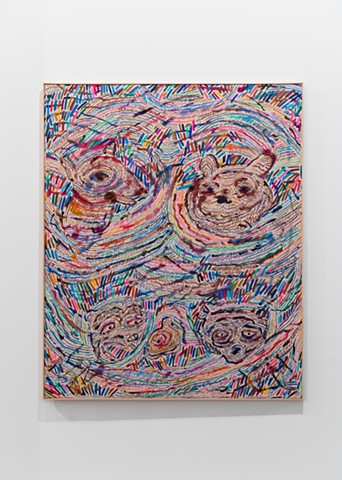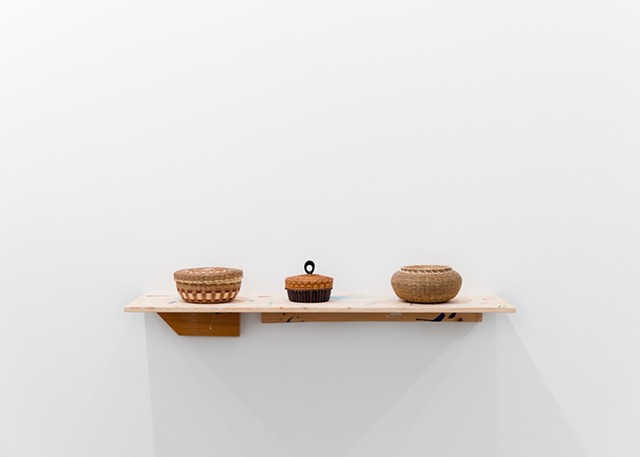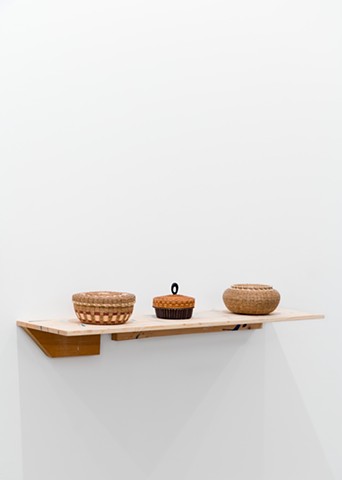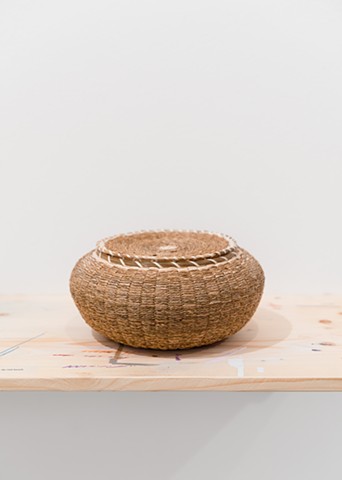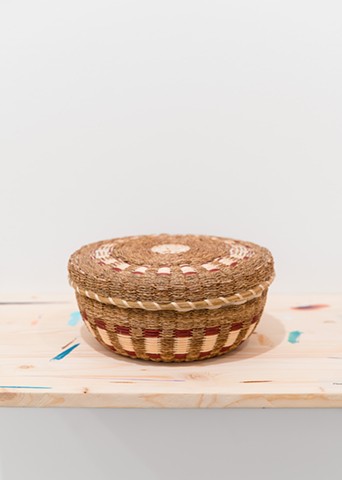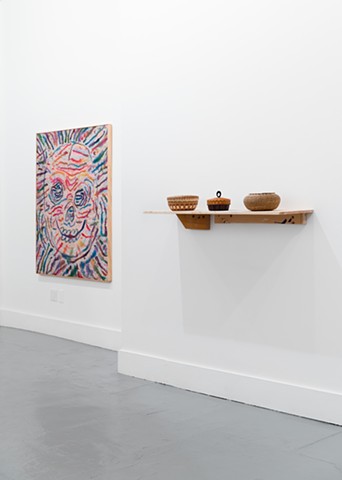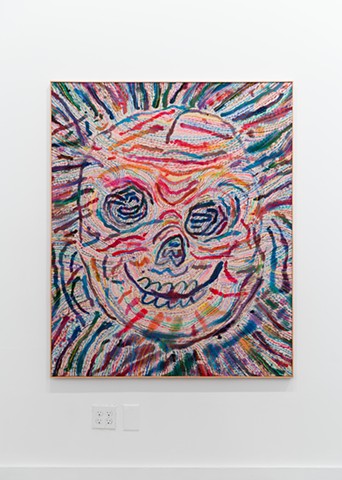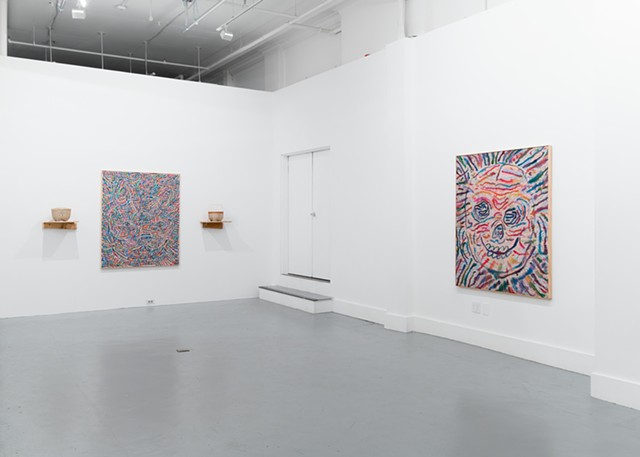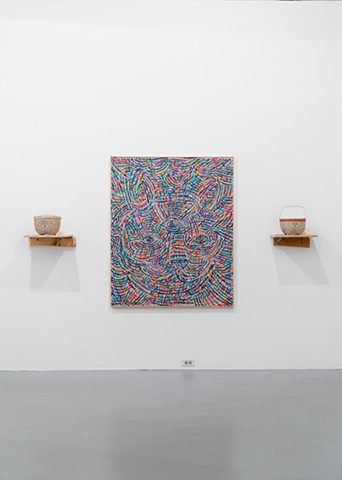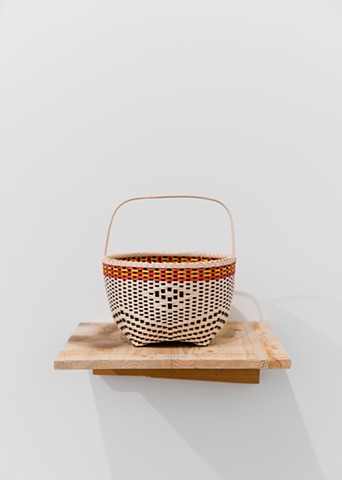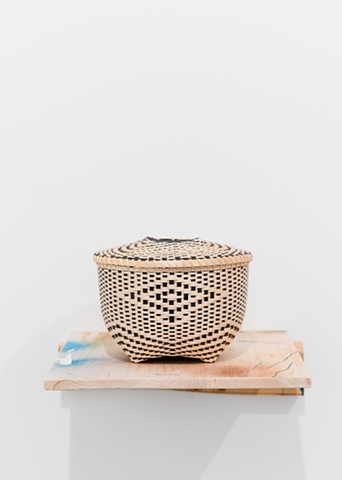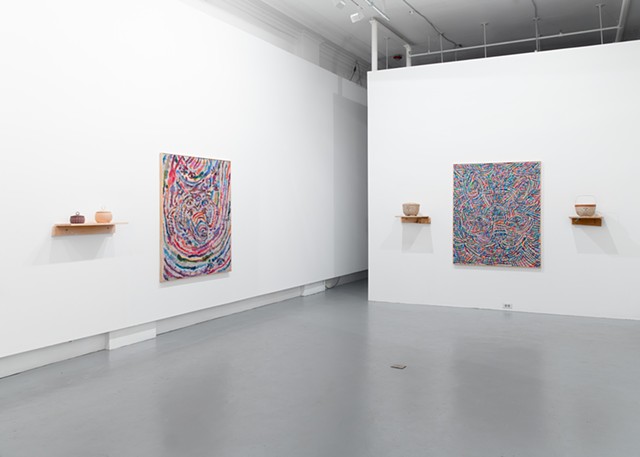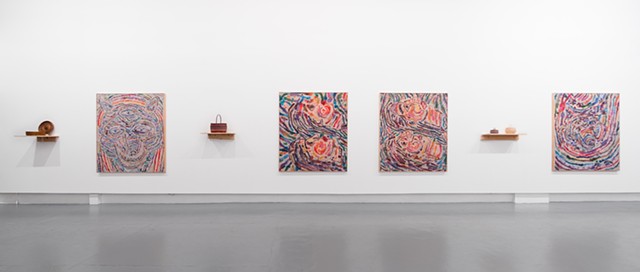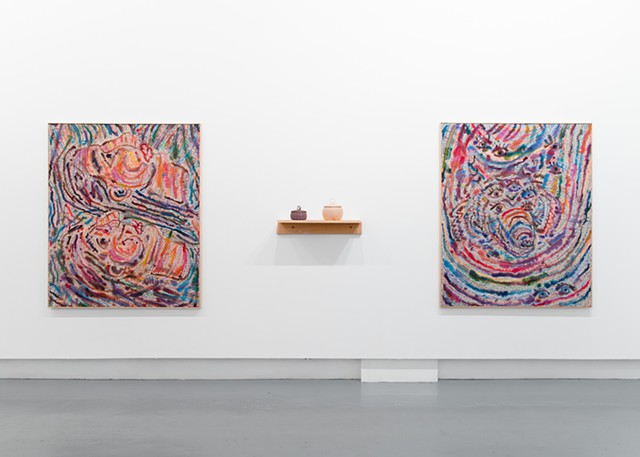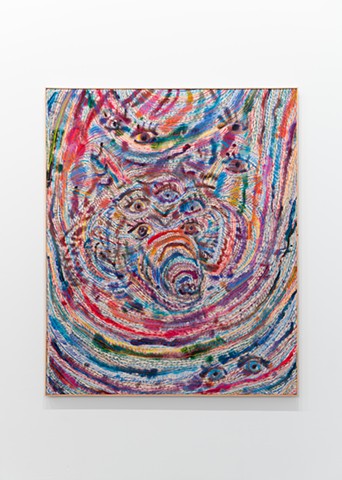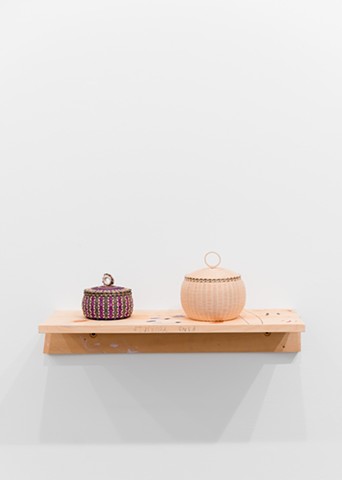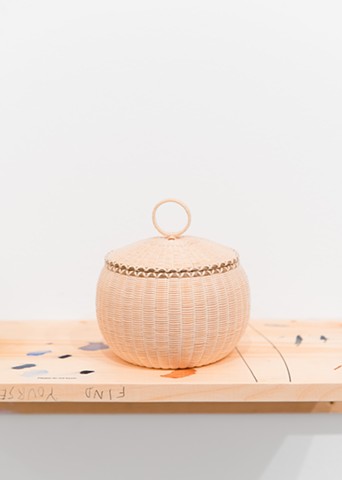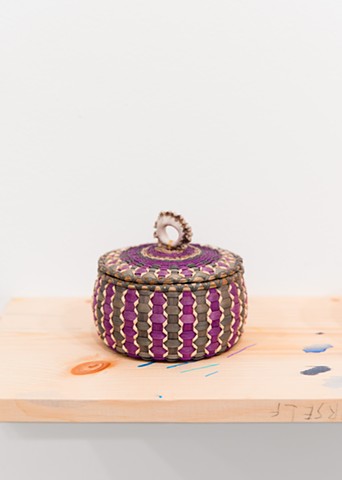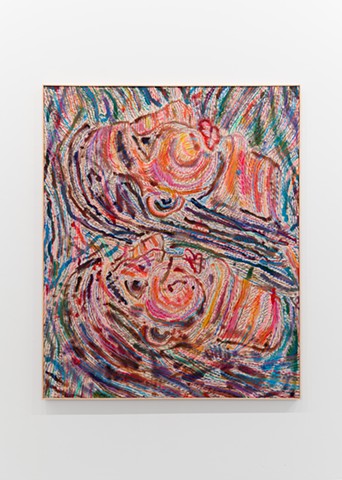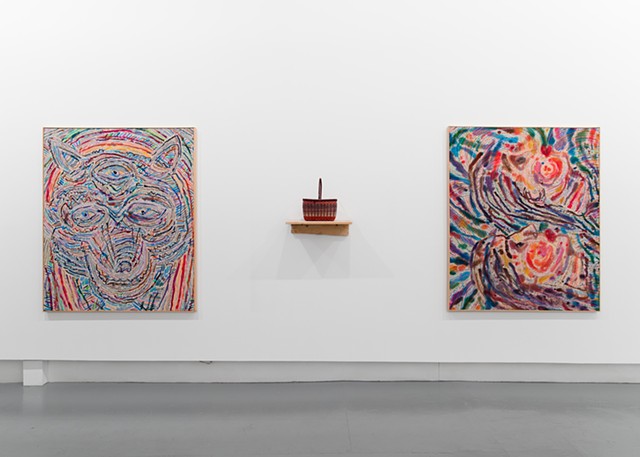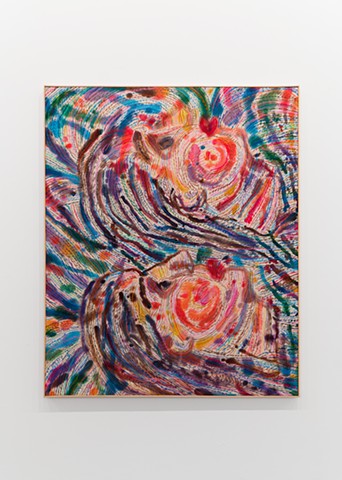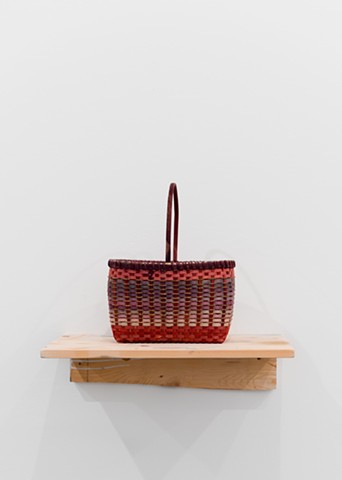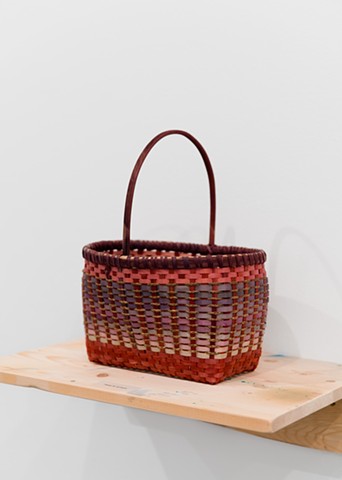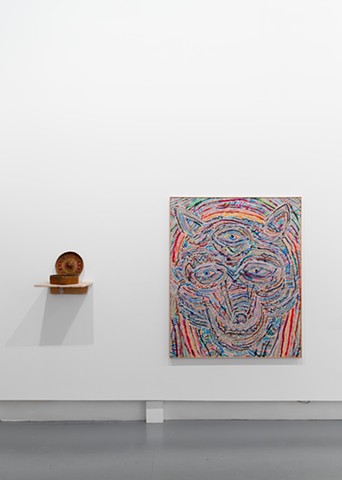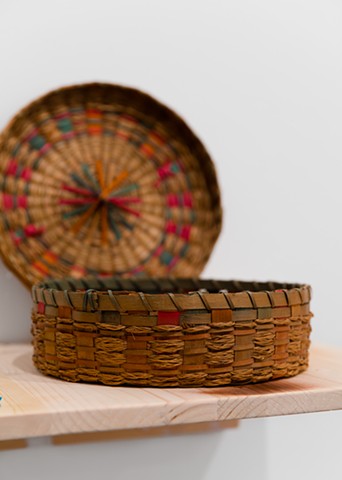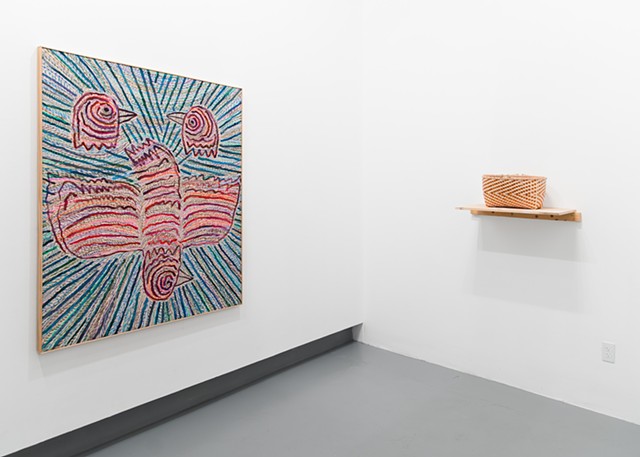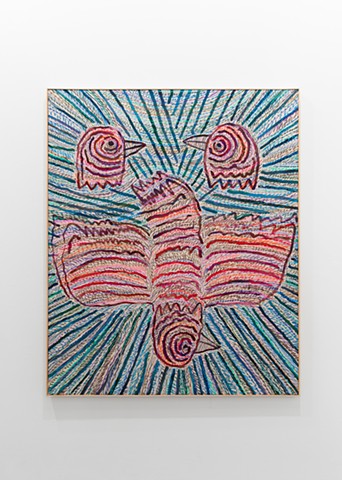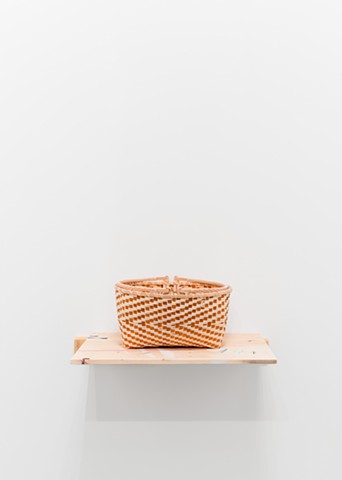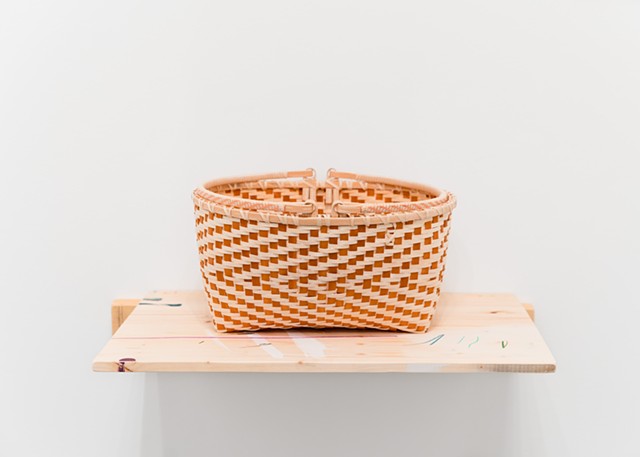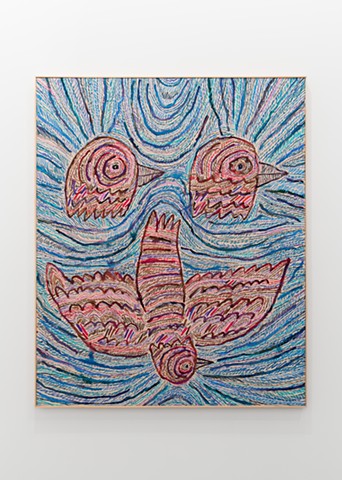Carry Me
Carry Me
August 2 - September 21, 2019
Howard Fonda featuring Gabriel Frey, Suzanne Greenlaw, Jennifer Neptune, Sarah Sockbeson, and Fred Tomah
SPACE is pleased to present an exhibition by Oregon artist, Howard Fonda, with baskets woven by Wabanaki artists across Maine.
Often referred to as a painter's painter, Howard Fonda creates work with a sophisticated, yet folksy air. The works in the exhibition are composed of acrylic and colored pencil on raw canvas in artist frames and continue his bold use of mark and color. Thematically, nature abounds as marks abstract, turn to pattern, or lose themselves in themselves. When conceiving the exhibition Fonda wanted to pair his contemporary practice with Native peers in the region. Knowing the rich history of weavers that predates painting in the Americas, Fonda wanted to couple the two traditions and highlight their contemporary equivalency. Fonda writes that the baskets could provide a frame that "draws a connection among content, craft and form," drawing a parallel in artistic practice and allowing the viewer to experience the hand at work. With close attention to materials, mark making, and the hand, the artwork in Carry Me points toward a spiritual dialogue and larger historical arc often blurred by a narrow, Eurocentric view of the world.
On the one hand, the exhibition complicates traditional definitions of fine art and craft which allow the paintings and baskets to hold equal significance within the gallery; on the other, it confronts our notions of power and otherness in a stolen land.
Baskets are positioned in conversation with Fonda's paintings, side by side in groups and pairings. These aesthetic groupings speak to a formal connectedness that underscores the contemporary nature of all the work, while simultaneously providing a deeper historical dialogue about tradition, identity, and humanity.
These exchanges unpack the role of the contemporary in curatorial practice. One byproduct of this exhibition is to investigate and confront the ways in which colonial narratives of the past might better inform more equitable curatorial conventions today. In most higher education institutions and large museums, exhibition practices favored histories of painting that align with Eurocentric, patriarchal narratives inherited from America's racist roots. This type of selective historiography fails to question the bias of this narrative and how it impacts the field at large. Museums are notorious for "othering" indigenous art in their collections, as evidenced in the many human remains that exist in spaces across New England, and the fact that many of these objects follow a provenance that traces white collectors while omitting details about indigenous artists. Carry Me offers a more considered curatorial positioning that takes into account an inclusive historical narrative which in turn allows for more comprehensive definitions of contemporary artistic practice.
